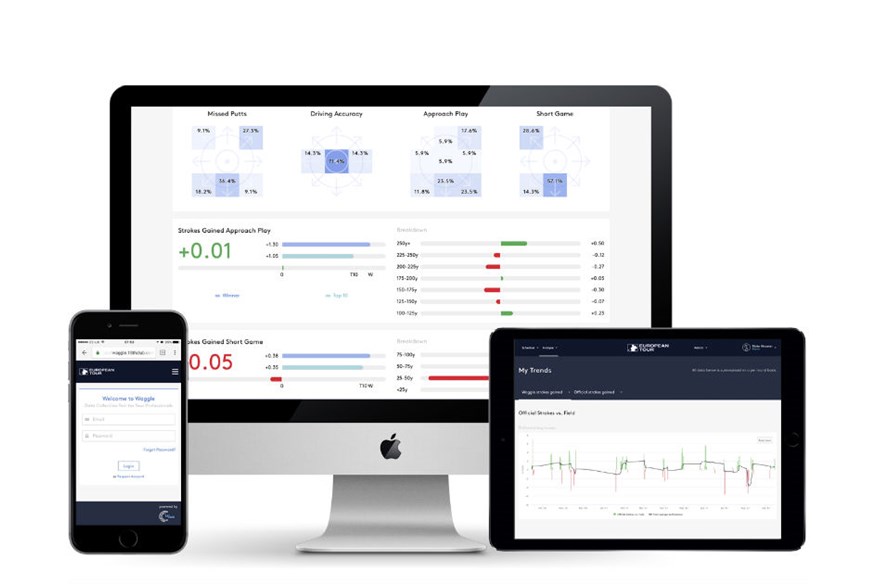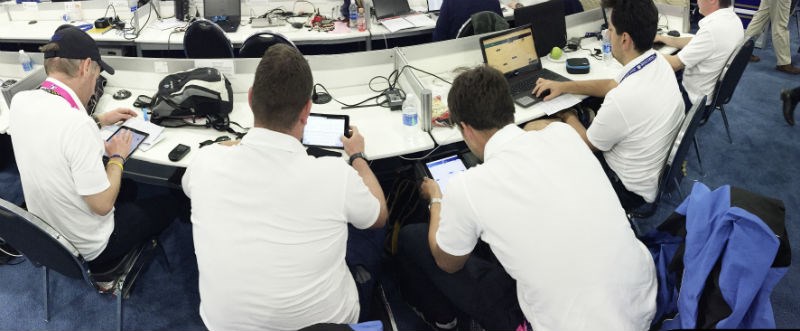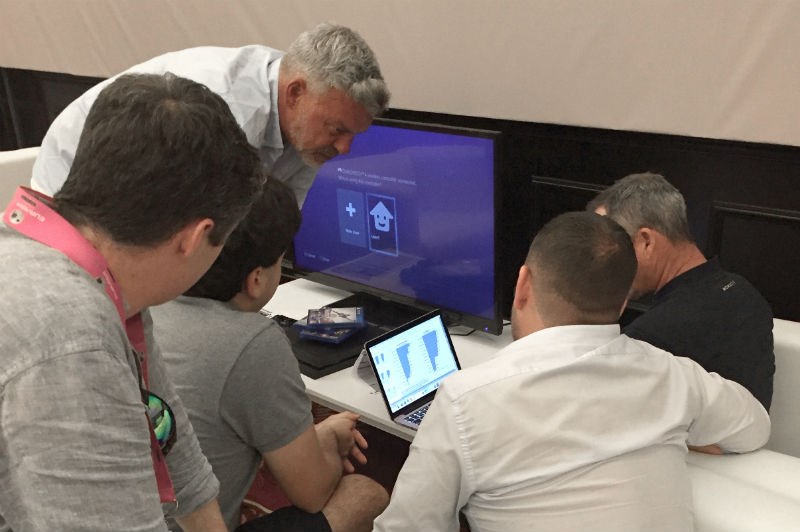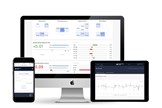15th Club: How big data is changing the game
Last updated:
Meet the entirely legal 15th Club that has probably already told Thomas Bjorn who’s on the plane to Paris…
It’s often said that every football team needs a 12th man. But rarely do you hear about a golfer needing – and using – a 15th Club. Doing so is usually grounds for disqualification, but not so if you’re a European Tour member.
Every player, caddie and coach is actively encouraged to use them without penalty. When Danny Willett won the 2016 Masters, he even paid tribute to that very same club. Only he wasn’t referring to an extra club in his bag. He was merely championing the golfing arm of the 21st Club, a British-based football analytics and consultancy company.
Born out of an idea scribbled on the back of a napkin, “over a bottle (or two) of wine”, the 21st Club opened for business in August 2013 with just two staff and the aim of providing “contextual intelligence to data”. The concept proved an instant hit and as word spread, so did their client list.
Their partners now include the FA and dozens of European, national and global leagues and teams, including Manchester City, Arsenal and Tottenham Hotspur. Applying the same business model to golf, however, was never on the agenda, but everything changed when CEO and co-founder Blake Wooster met then Ryder Cup captain Darren Clarke for lunch in April 2015. He left an hour later with the job of being the analytics partner for Team Europe.
Wooster promptly hired four software engineers to build an analytics app for golf and within two months, he had a fledgling venture called the 15th Club – while Clarke had a digital dossier on every Ryder Cup hopeful. Three years on and a team of 10 data scientists, software engineers and industry experts are now providing the same service to Thomas Bjorn and his vice-captains. But, as Wooster told TG, it’s just one part of a much bigger business which involves providing software for Sky Sports, the European Tour and a bunch of Major winners.

Players have access to all the data they need using 15th Club’s unique software called Waggle
We never imagined that we would diversify into golf… It kind of happened to us, rather than by us. An old friend of mine Duncan Carey, who was the head pro of Astbury Golf Club at the time, had been following what we were doing in football and called me to say there was a similar opportunity in golf.
The transition from a team-based, fluid sport to an individual one didn’t seem obvious, but when we investigated further we realised Duncan was right. Luckily, he knew Darren Clarke and he said he could get us a meeting with him. We showed Darren what we did in football and he loved it. He just said, ‘look, I’ve got to have this for the Ryder Cup.’ So, before we knew it we were building a similar business in golf.
Darren’s biggest problem as a captain – and the same goes for all his vice-captains – was not being able to be everywhere at once. It’s difficult trying to get information on how everyone is performing because you can only be in one place at one time. So, we built an analytics dashboard essentially, which gave him information on how and where the players were playing, and we also used our data scientists to provide probabilities on how likely players were to make the team. So ahead of time, Darren knew which players were likely to make the team so he could start playing around with different strategies for fourballs and foursomes.
We’re now doing the same thing for Thomas Bjorn ahead of this year’s Ryder Cup. We can provide projections on who will make the team, and run simulations based on how well Rory might play with Jon Rahm relative to how he might play with Henrik Stenson in different circumstances.
Really, we’re just another voice in the room when it comes to the decision making. So, if we find out that experience is more important in foursomes or fourballs or if a certain player performs better on Sunday when they were given a rest on the Saturday, we can then feed that data into the dashboard for Thomas to use.
Data might tell you one thing, but it’s also important to understand the players’ personalities and how they might interact with each other. We can get pretty smart with analytics and how someone might play under pressure. It’s all very well knowing someone’s track record at Le Golf National, but it’s also important to know how they perform when they are leading a Major compared to a ‘lesser event’ or when they are at the top of the leaderboard versus coming from behind. Our mission is to reveal the true story of golf performance.

There are myriad stats collected every week. Here, the team are crunching numbers at the 2016 Ryder Cup
Traditional stats don’t necessarily tell the accurate story of how a golfer is performing, or about their quality. If you look at traditional statistics like greens in regulation or average putts per round, they don’t give you a strong indication of how a golfer is performing. For example, we could play a round together and you could hit your approach shot three feet from the pin and I could put mine 20 feet from the pin.
Though we would both achieve a green in regulation, how good your shot was compared to mine wouldn’t be reflected in the traditional statistics. We try to be a lot more granular in our approach and take into account another layer of insight and statistics where a golfer can understand the proximity to the hole from specific yardages.
From our work with the Ryder Cup, we’ve started working with a lot of European Tour players directly. The likes of Rory McIlroy, Matt Fitzpatrick and Thomas Pieters. One of the earlier success stories we had was with Danny Willett when he won the Masters. We then ran a partnership agreement with the European Tour, and they basically took a master licence from us and rolled that software out to all their members. Now, every Tour pro can get access to the 15th Club’s software, which is called Waggle (above).
Some of the next generation of golfers like Fitzpatrick and Chris Wood have grown up with data and have a huge appetite around getting as much information on their game as they can to get a competitive edge. Typically, a player will log in daily with their coach to get their stats for a specific tournament. We also have WhatsApp channels and often a player will ask where they should be playing next month. They want to know which courses suit their game, so we do a lot of schedule optimisation and use analytics to help a golfer understand where their game is best suited.
For example, Rory and Rahm hit the ball further than most, but can be a bit wayward, so the software will identify courses which don’t penalise them and their style. Whereas, golfers like Francesco Molinari and Fitzpatrick will suit tighter courses where they can capitalise on their accuracy off the tee. We can then run simulations on the data we have and produce an optimised schedule for the golfer by giving them 25 events which they should play to give themselves the highest probability of success.
If you look at the profile of Clarke and Bjorn, they’re at the back end of the careers and have still got a big appetite for this type of information. We shouldn’t assume that it’s only the next generation of millennials who are interested in this stuff.

We’ve calculated that if a golfer can improve their score by just half-a-shot per round – two shots per tournament – it can increase their earnings potential by 72%. That’s often how the conversation starts with the golfer when they ask, ‘why do I need this?’ We can’t guarantee that our data will get them that half a shot, but at least it’s very measurable.
The danger with any piece of statistical information is overcomplicating it. Our aim is to provide a simple insight, and that can be as simple as ranking golfers on the different aspects of their game. We try to condense the information into simple, meaningful ways which people can dip into and out of. There are a lot of companies that produce statistics. It’s a crowded market, but I think in terms of analytics, we’ve probably trail-blazed a new way of analysing the game. We’re the first to optimise schedule and predict future performance and run simulations.
We’re really fortunate that we started right at the elite end of the pyramid. Most companies try and get their foot in the door somewhere and then move up the ladder. Whereas, we’re coming at it from the opposite direction, trying to get some scale to grow the business. In terms of our strategy moving forward, we’d like to make our services available to a broader audience. The most immediate things for us would be the Challenge Tour, EuroPro Tour and Web.com Tour. But then we’d love to bring to market a version of what we do for club golfers.




